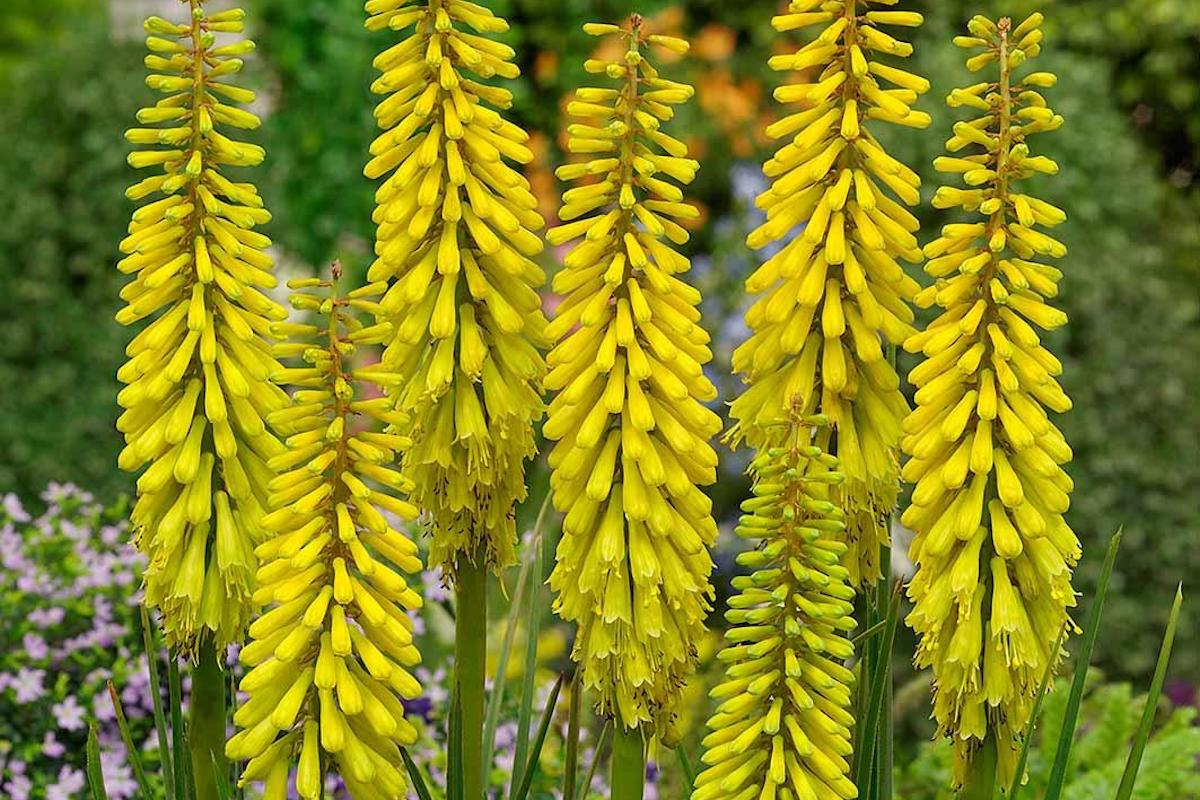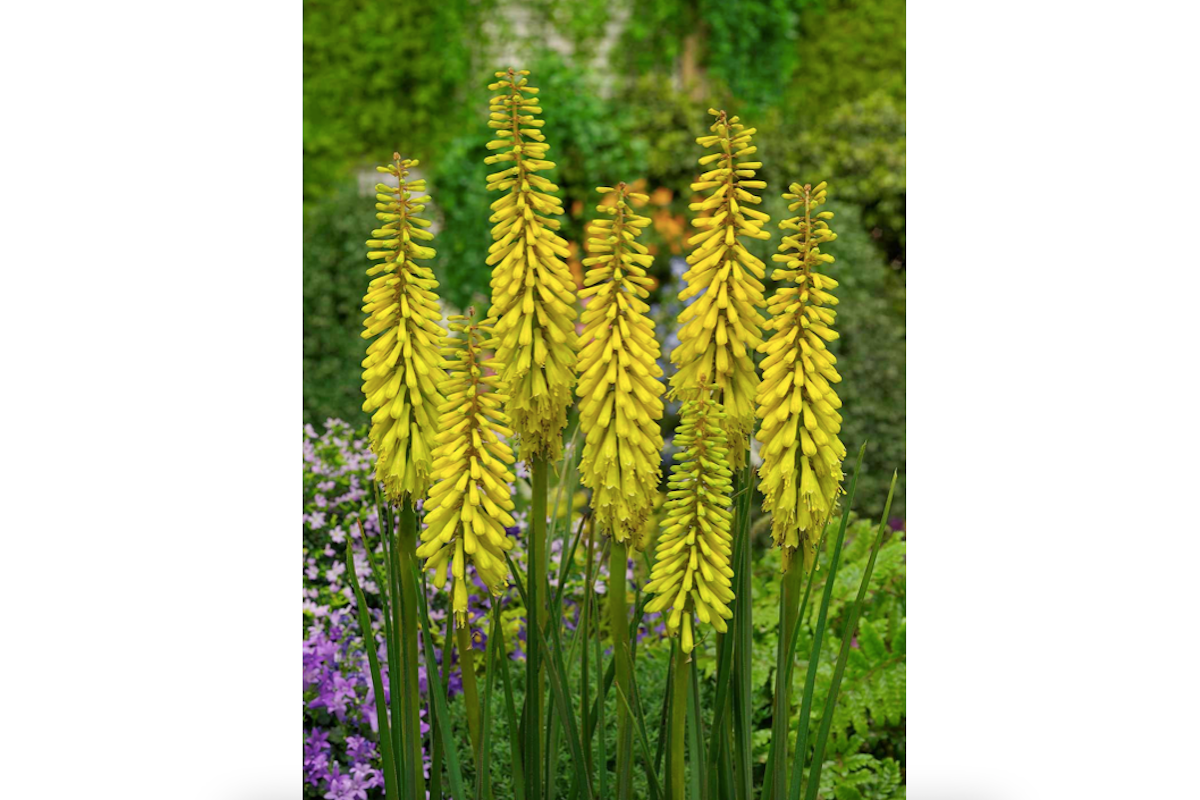Kniphofia 'Sunningdale Yellow'
Approx. 0.5 litre pot
About this cultivar:
Kniphofia 'Sunningdale Yellow' won the Royal Horticultural Society Award of Garden Merit (RHS AGM) in 1993. What did they say? 'Yellow lined with green-yellow inflorescence held over upright, slightly spreading foliage. Very floriferous, early to flower, slender spikes and foliage.
Again, the RHS have it as H5 (so I report that) but suspect it is H4!
- Position: Full sun, partial shade
- Soil: Almost any soil
- Flowers: July, August, September, October
- Other features: Bees and Butterflies, Royal Horticultural Society Award of Garden Merit (RHS AGM)
- Hardiness: H5 - Hardy in most places throughout the UK even in severe winters (-15 to -10°C), Fully hardy
- Habit: Clump forming, Columnar or Upright
- Foliage: Deciduous
- Height: 90- 115 cm (3 - 4 ft)
- Spread: 60 - 90 cm (2 - 3 ft)
- Time to full growth: 2 to 5 years
- Plant type: Herbaceous Perennial
- Colour: Green, yellow
- Goes well with: Most things, try grasses
About this genus:
Kniphofia (nif-of-e-a) was first described in 1794 and is named after Johan Kniphof who was an 18th-century German physician and botanist who finished his magnum opus Botanica in originali in 1733. Apparently his name was pronounce 'Nip' not 'Nif'...
Commonly know as Red Hot Poker, it is a genus of South African native perennials that range from 1 ft dwarfs to 7 ft giants. They have a wide range of flowering times from mid-spring through late autumn, depending on the cultivar. The flowers are usually a bright orange and yellow colour; although there are many new cultivars in shades of cream, yellow, red, green, and even flourescent hues. Cream-hot-poker doesn't have the same ring to it though does it?
Most Kniphofia are quite easy to grow in bright sun to partial shade and most types of soil. It is not uncommon to find red hot poker plants growing and producing their beautiful flowers in long abandoned gardens or naturalizing in the countryside somewhere.
The cultivars we sell are not the cheap seed raised ones - but the tough cultivars that do well in our own garden. We plant them near anything, but I must say I quite like them combined with grasses.




